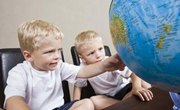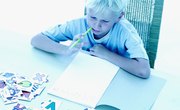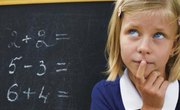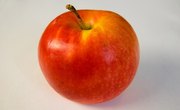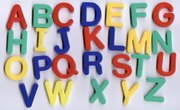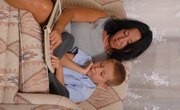Sight words, or high frequency words, are those words that most frequently occur in writing. Examples of sight words include prepositions and conjunctions, such as "at," "for," and "but," days of the week, and color words. Becoming familiar with these words is one of the first things that beginning readers learn because they are so commonly seen in texts. Sight word recognition activities are a large focus of the first grade curriculum to help children begin actively reading. If you're a first grade teacher, help your students study sight words with a variety of activities.
Create a word wall. Select a wall in the classroom that is easy to see and use it to display sight words. Hang colorful background paper. As new sight words are learned, write them on pieces of colorful paper and hang them on the word wall. Review the sight words on the wall on a regular basis. Read the words as a class, have individual students read the words, or say a word and have students point to it on the word wall.
Play sight word games. Games actively engage children and make learning more fun. Write a color word on the board and ask students to find an object in the room that matches that color. Write sight words on index cards, scatter them on the ground, and have students toss a bean-bag onto the cards. Instruct them to read aloud the word where the bean-bag lands.
Locate sight words in written pieces. Photocopy pages from a book. Distribute the photocopied pages to students, along with highlighters. State a sight word and instruct the children to read through the pages and highlight all instances of the specified sight word.
Use flash cards to promote sight word recognition. Write sight words on index cards. Each day, ask the class to read the words on the cards as you display them.
Related Articles
Writer Bio
Lily Mae began freelance writing in 2008. She is a certified elementary and literacy educator who has been working in education since 2003. Mae is also an avid gardener, decorator and craft maker. She holds a Bachelor of Arts in education and a Master of Science in literacy education from Long Island University.


